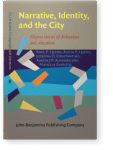Part of
Narrative, Identity, and the City: Filipino stories of dislocation and relocationRaul P. Lejano, Alicia P. Lejano, Josefina D. Constantino, Aaron J.P. Almadro and Mikaella Evaristo
[FILLM Studies in Languages and Literatures 8] 2018
► pp. 160–168
